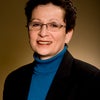Although we may not know the women behind the names, we do know their accomplishments – because their legacy is now part of our culture and language. The women in today’s column have lent their names to processes, products, and services. We know the process, product or service; now let’s learn about the woman. Match the woman with her accomplishment:
____ 1. One of her most popular original teas got its name from a comment made by a friend: “My dear, your tea was the hit of the party. There was nothing but constant comment.”
____ 2. Her named spelled backwards refers to 18 elemental motions that are key to time and motion studies – the underpinning of the field of industrial engineering, of which she was a co-founder.
____ 3. Named for the doctor who developed it, this zero to 10 score is administered to all babies in hospitals around the world at one minute and five minutes after birth to determine if medical assistance is required.
____ 4. Her name is used to describe a form of alternative medicine that she developed which involved physical manipulation of the body.
____ 5. A biological cycle that describes how muscles convert food to energy for the body is named for her.
- Virginia Apgar
- Ruth Bigelow
- Gerty Cori
- Lillian Moller Gilbreth
- Ida Rolf
Physician Virginia Apgar wanted to be a surgeon, but in the early part of the 20th century, her advisor strongly urged her to pursue a different medical avenue as women surgeons weren’t accepted at that point in our history. Apgar became an anesthesiologist instead. Noting that all of the attention at birth appeared to be on the mother, in 1952, she developed a zero to ten point score that is now used worldwide at one minute and five minutes after birth to assess the medical condition of the baby. The Apgar Score uses the initials of her name – Appearance, Pulse, Grimace, Activity, and Respiration – assigning each 0, 1, or 2 points. Apgar has been inducted into the National Women’s Hall of Fame and featured on a U.S. postage stamp.
In 1945, Ruth Bigelow was dissatisfied with teas that were commercially available. Instead, she developed her own specialty tea that was so popular “My dear, your tea was the hit of the party, there was nothing but constant comment” – that it was named Constant Comment. This tea was the start of the Bigelow Tea Company, still in business and still in the family today.
The first American woman to receive the Nobel Prize in Physiology or Medicine (1947), Gerty Cori and her husband Carl worked together in medical research. Together, they researched how the body processes food, specifically carbohydrate metabolism. The Cori cycle, which is named for them, describes the pathway between the muscles and the liver for glucose processing. This cycle is an important underpinning for understanding and treating diabetes. Cori has been inducted into the National Women’s Hall of Fame.
Lillian Moller Gilbreth gained fame as the mother of twelve children in the books and movie Cheaper by the Dozen. She and her husband Frank had twelve children on purpose – to test their theories of industrial engineering. Considered the co-founders of the field of industrial engineering, the Gilbreths were always looking for the one best way to do a process or procedure. Today, the term “therblig” (their name spelled backwards) refers to one of 18 elemental motions used in time and motion studies in the workplace. Gilbreth has been inducted into the National Women’s Hall of Fame and featured on a U.S. postage stamp.
Biochemist Ida Rolf used her medical knowledge along with such disciplines as yoga, osteopathy, and chiropractic medicine to improve the health conditions of her loved ones. Today, the technique known as Rolfing, which she called Structural Integration, is a holistic system of soft tissue manipulation that takes advantage of gravity to organize the body. Her technique targets the body’s myofascial system and people sought her out to treat stress, relieve pain, and to improve their daily lives. Her legacy today continues through the Rolf Institute of Structural Integration and the Ida P. Rolf Research Foundation.
Learn about more she-roes and celebrate amazing women. These amazing women whose legacy we know are among the more than 850 women profiled in the book Her Story: A Timeline of the Women Who Changed America. I am proud to tell their stories and help write them back into history.
(Answers 1-B, 2-D, 3-A, 4-E, 5-C)
